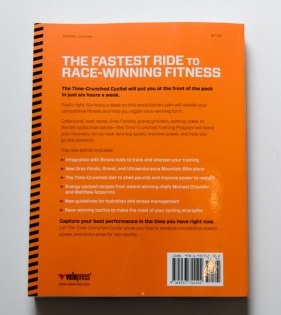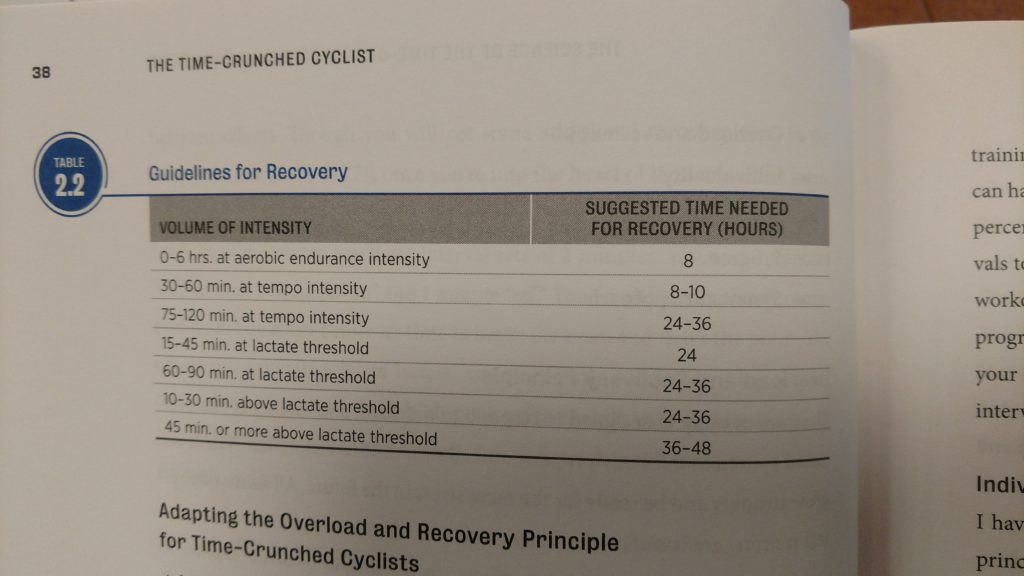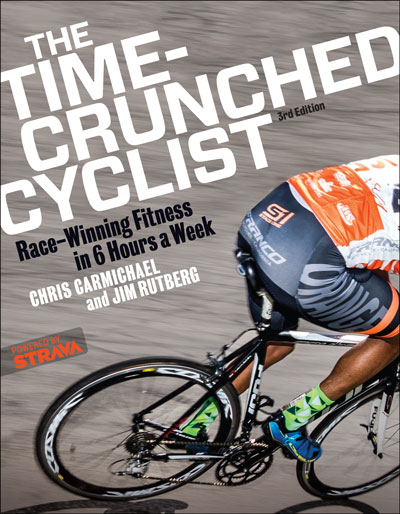
When the folks at TriSports University asked me to review The Time Crunched Cyclist, I thought, “Sure thing. I’ve read some of Chris Carmichael’s other books and trained using his Carmichael Training System (CTS) DVDs. Plus I’m retired—I have all kinds of time.” Carmichael says it himself early in the book: inasmuch as we’re all time-crunched in our daily lives and need to make the most of our training, who has time to read a 430-page book about it?
The Audience
The audience for The Time Crunched Cyclist is primarily amateur road racing cyclists who want to improve their performance and results in criteriums and road races but have full-time jobs—and possibly families—that leave little time for training. As a road racer and sprint duathlete, the book offers several workouts to help me get faster. The book offers separate chapters with training programs for various kinds of cycling, including: criterium, road race, and cyclocross; century and gran fondos; gravel and ultraendurance mountain bike racing; and even a plan for making commuters “race ready.”
High-Intensity Training Model
Carmichael and co-author Jim Rutberg cite several research studies that point to the benefits of a high-intensity training model vs. the classic endurance-training model. Pro cyclists have traditionally use the latter—high volume and low intensity in the fall and winter, gradually adding intensity as the racing season progresses. The former model, which Carmichael and Rutberg define in the book as the Time-Crunched Training Program (TCTP), has been shown to get results quickly, but not easily. It is definitely intense.
Benefits
One of the biggest benefits of high-intensity training is its ability to improve mitochondrial density. In describing the human aerobic engine, the authors write:
The rock stars of the aerobic system are little things called mitochondria. These organelles are a muscle cell’s power plants: Fuel and oxygen go in, and energy comes out. For an endurance athlete, the primary goal of training is to increase the amount of oxygen your body can absorb, deliver, and process. One of the biggest keys to building this oxygen-producing capacity is increasing mitochondrial density, or the size and number of mitochondria in muscle cells. As you ride, more and bigger power plants running at full capacity give you the ability to produce more energy aerobically every minute.
Carmichael and Rutberg share research on how high-intensity training results in the development of mitochondria, which can deliver more energy to the muscles. In other words, riding all day at 14 miles per hour isn’t going to help make you faster. A 60-to-90-minute workout that includes high-intensity intervals, however, can make you faster.
The science behind the TCTP is based on our relatively recent ability to reliably measure power output. If you’re going to use this book as a cycling training guide, it is highly recommended that you equip your bike with a power meter. The authors point out that it was the use of power data that led to one of the most important trends in training today: the ability to know when you need to rest and recover. Carmichael and Rutberg emphasize the value of recovery in any training program.
Fuel & Hydration
The book offers some excellent tips on weight management, nutrition and hydration, and heat-stress management. The recipes they offer are hit-and-miss (they’ve published two separate books about food and diet), but they offer extensive research data on fuel and hydration. Notably, they recommend you get your calories from your food—not in your drinks.
Powered by Strava
Something added to this edition of the book is the tagline Powered by Strava. Mark Gainer, co-founder and CEO of Strava, writes in the book’s foreword about how the precepts of the TCTP helped him achieve his goal of competing in the Leadville 100 bike race. The book offers suggestions on how to use Strava’s analysis tools to gauge your progress and while they recognize that other applications like TrainingPeaks offer more robust tools for analysis, they think that Strava’s interface and tools are “far more accessible to the average time-crunched athlete and provide the essential information you need.” They discuss at length how to use Strava’s tools like Effort Comparison, Power Curve and Fitness and Freshness, which they describe as one of the most useful and valuable tools available for Strava Premium account users.
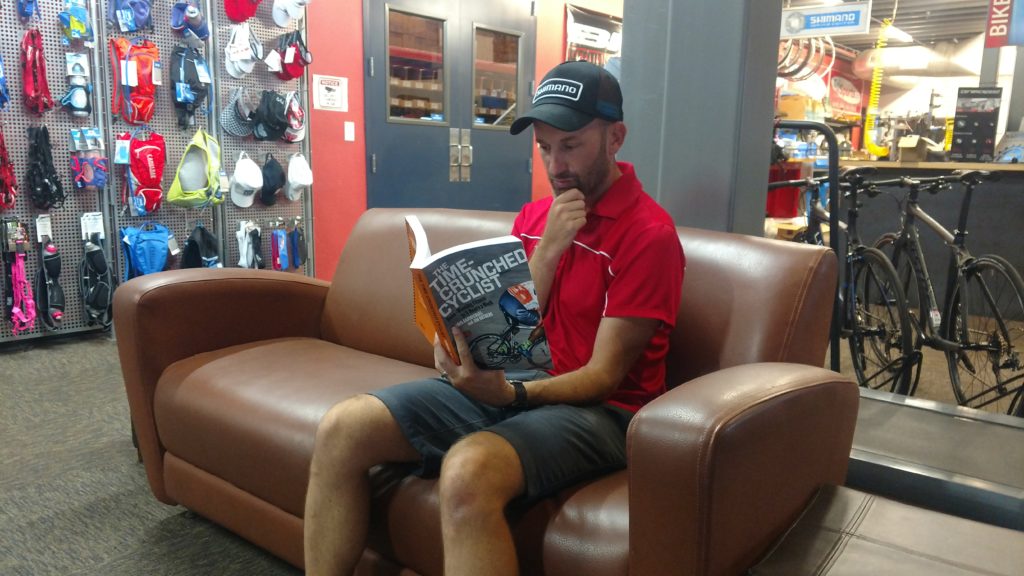
Getting Started
In order to begin the program, you will need to perform the CTS Field Test to establish a benchmark for your fitness. The field test consists of two eight-minute all-out time trials separated by ten minutes of easy recovery. Trust me: if you don’t like the idea of submitting yourself to that kind of punishment, you won’t like the TCTP program. As I wrote earlier, it is intense. The program suggests two main types of workouts: lactate threshold intervals and VO2 max intervals. They will hurt; and they will make you a faster cyclist.
![]()
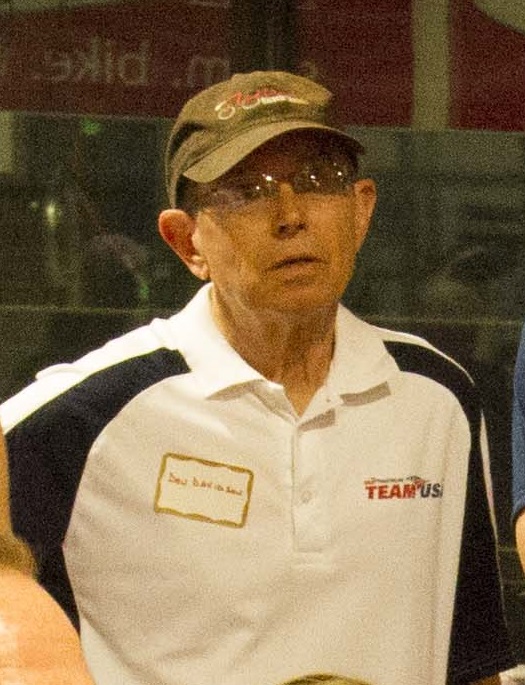 About the Author: Don Davidson is a TriSports.com Ambassador Team Member and duathlete. Don resides in California, but recently retired, which means he is able to travel more to enjoy time with his grandkids and family.
About the Author: Don Davidson is a TriSports.com Ambassador Team Member and duathlete. Don resides in California, but recently retired, which means he is able to travel more to enjoy time with his grandkids and family.

